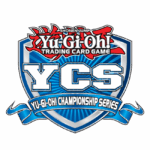
Genesys @ YCS Anaheim
The first Genesys Invitational went off without a hitch last weekend and Duelists had a lot of fun! We had 29 qualifier tournaments (26 on Saturday, 3 more on Sunday), the full Invitational main event on Sunday, and another 19 on-demand Genesys events on Sunday from people who just wanted to play more. So we’ve got a nice stack of Deck Lists to look at! Here are some takeaways from the first big weekend of Yu-Gi-Oh! TCG Genesys!
By and large, the field looked as expected
In a way, the most surprising thing was that the Decks people were playing were all Decks we expected to see. No unexpected primary strategies appeared, but there were some unpredicted side engines and splashes. On the other hand, there were several strategies we thought we’d see more, but appeared either infrequently or not at all. The biggest missing one compared to our expectations was Onomat, and the impression we got was that this may have been because players also expected to see a ton of it and thus avoided playing it while Side Decking a ton of Flying “C”.
Players were overwhelmingly willing to make Extra Deck concessions to play Pot of Extravagance
We did think that a good number of players would either play traditional “Extravagance Decks” or make the concessions to add Pot of Extravagance to the Deck they were building, but the actual number of players running it and the diversity of strategies that were modified to incorporate it was extraordinary. There was a lot of Pot of Extravagance all over place. Top tables, bottom tables, and everywhere in between. Everyone is playing it, many are winning with it, and it’s warping Deck construction around itself, so we would consider it a textbook example of a card “outperforming its contract” and quickly “getting a raise” (in point cost).
Themes both new and old were able to win
The successful Deck themes from the qualifiers hail from a wide swath of Yu-Gi-Oh!’s history. The oldest* strategy that won a qualifier was Jurrac, which was originally introduced in 2010 but didn’t get its key Synchro Monster, Jurrac Meteor, until January of 2011. The second oldest was Madolche, originally introduced in 2012’s Return of the Duelist. It was closely followed by Dragon Rulers from 2013’s Lord of the Tachyon Galaxy. The newest themes that were successful in qualifying were Doom of Dimensions’ Radiant Typhoon, Justice Hunters’ Dracotail, and Duelist’s Advance’s Artmage, all from this year.
Were Forbidden cards popular?
Overall, no they weren’t. The most popular was Pot of Greed (which is to be expected, of course, because it allows you to draw 2 cards from your Deck). There was a smattering of Graceful Charity and Mirage of Nightmare, but certainly not as much Mirage as expected. Chaos Ruler, the Chaotic Magical Dragon made a couple of appearances. There were also a few Duelists who built their Deck around the 100-point True King of All Calamities, one of whom made the Top 4 of the Invitational using it in Generaider. The surprising part isn’t that Generaider was a popular Deck, it’s that there was a divide between Generaider players going all in on All Calamities and Generaider players using a more traditional defensive lineup or powerful draw Spells, and both doing well. It’s a good sign when multiple variants of a single Deck succeed, rather than one totally outclassing the other.
There’s another Invitational this weekend in São Paolo! We’ll take that data and then get to work on the next point adjustment, which we’d like to have done in plenty of time for the 3 YCS events in November, starting with Pittsburgh. It’ll be about 4 or 5 weeks after the last one, which is on the shorter end of the target timeframe, but it’s early days and we’ll have plenty of data to work with! Best of luck to everyone playing Genesys this weekend!
*Counting Blue-Eyes as a 2016 strategy (not 2002) coinciding with Shining Victories and Red Dragon Archfiend/Resonator as 2015 strategy (not 2008) coinciding with High-Speed Riders, as these are the sets that introduced the basic strategies they use to this day.


